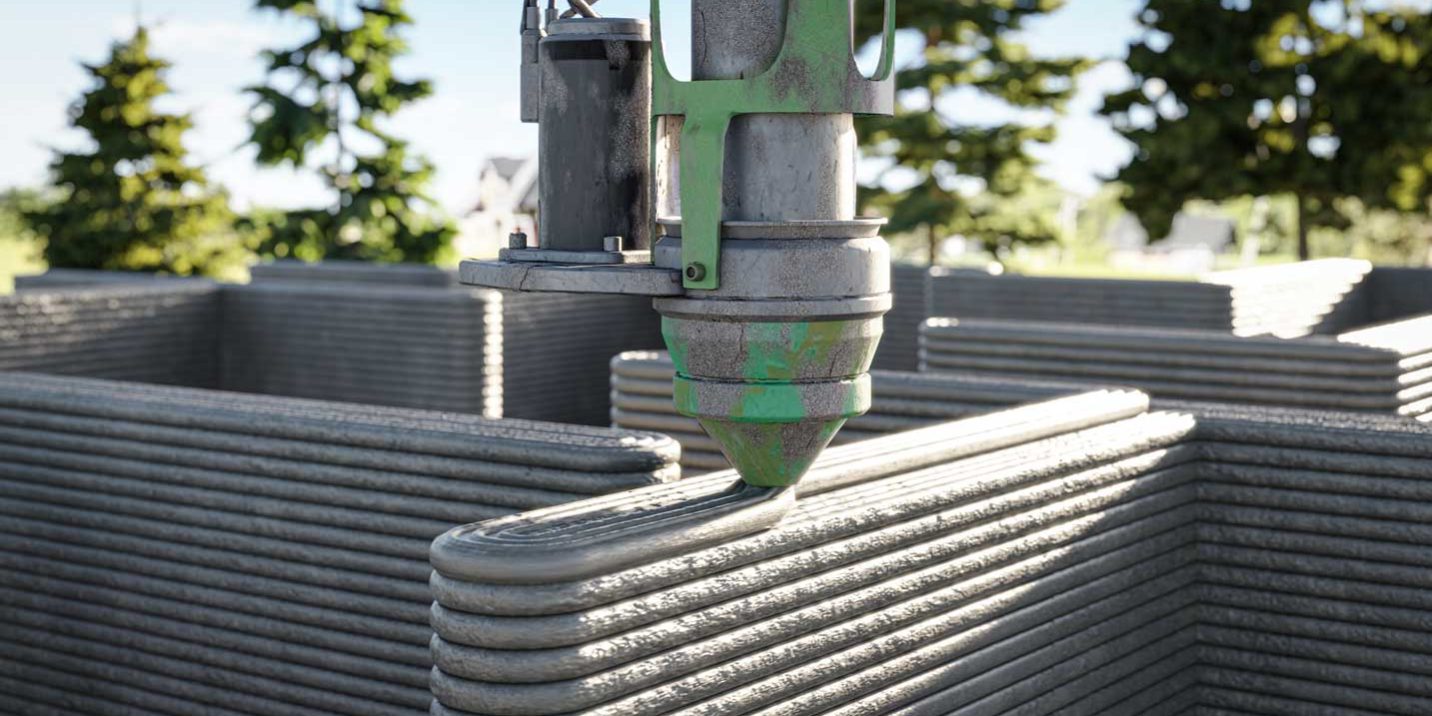Dream big, print big with the Large workspace plugin
As the name suggests the plugin allows you to print on printers that are large, more precisely that are larger than one meter on any axis. You can forget about the usual limit of the workspace size of 1m x 1m x 1m and print as big as you dream.
The case is of course not that simple. Printing bigger can come with bigger problems. Therefore we have improved some features relevant to this with a specific focus on the Large workspace. Here are four ways you can benefit from this.
Precise start and stop of extrusion
Thanks to the Large workspace plugin you can print large objects. A good example of this is 3D printing houses.
This usually happens with a very thick nozzle that also makes it more difficult to control the start and stop of filament. To overcome this, slicers usually have a distance-based delay feature. This allows the extruder to start or stop a certain distance from the start or stop of the contour.
But there is a problem with that. It is not so accurate because the start and stop of filament is a time based issue. For example stopping 2 cm earlier can mean very different if you move 150 mm/s compared to 30 mm/s. Therefore we have developed a time-based delay of starting and stopping extrusion. REALvision Pro puts the extruder stop point exactly where there is enough time for the flow to stop right at the end of the path. This gives a very precise start or finish.
Hide zippers and Stitch seams are additional features to reduce these flow related defects. In REALvision Pro you can find these retraction settings in the Printing settings/Expert tab/Material Properties/Retraction option.
Automatic infill connections
When you print big with specific materials, such as printing a house with concrete, the infill line connections can be discontinuous. Infill line connections are the lines connecting the infill pattern within the object. Normally they are being printed continuously, so that the infill lines are connected at the ends. But they might take up space that needs to be used for something else in case of large prints. For example to place isolation in there in case of 3D printing houses.
Therefore a unique feature of REALvision Pro was created: the Automatic infill connections feature. This allows to stop extruding the infill connection lines at specific places instead of being printed continuously. This frees up space within the object and the infill connection lines that are printed strategically will serve as support beams for the print (house).
In REALvision Pro you can find Automatic infill connections in the Printing settings/Expert tab/Model/Infill section. If enabled, REALvision Pro will make sure infill lines are connected at the ends. If disabled, you can specify the length of additional infill before and after infill lines. These will follow the shape of the contour.
It’s important to remember that this is not the infill pattern itself but the lines connecting the infill pattern.
Seamless prints with improved Continuous Z
Large workspaces often mean printing with just one thick contour. That means that defects that are normally minor become more prominent. One of the most visible issue is the defects appearing during layer change. Imagine a piece of 3D printed furniture, or a prosthetic corset having a line from top to bottom as a result of changing layers. It would really not look appealing.
By using the Continuous Z setting you can print continuously without having defects around layer change. It allows you to print smoothly, in a spiral without sharp changes at each layer. Continuous Z is not new to the world but what makes the difference is that we have further improved it particularly for large workspaces.
In REALvision Pro you can enable it in the Printing settings/Advanced tab/Printing strategy or when you use Vase or Bracelet mode Continuous Z is automatically enabled.
Reliable software supported by real 3D printing experience
Experience behind the trusty toolbox is the key to success. The software is based on the REALvision core, which is the backbone of the slicing software for a decade serving printer manufacturers as a white-label software. There is a team of experts who knows 3D printing from the inside out, continuously working on updates and new features. They are not only writing codes but constantly testing material, print settings, and experimenting. This is the expertise that REALvision Pro customers can access without risking their problems being posted in an online forum.
